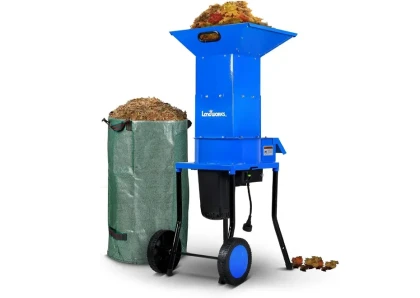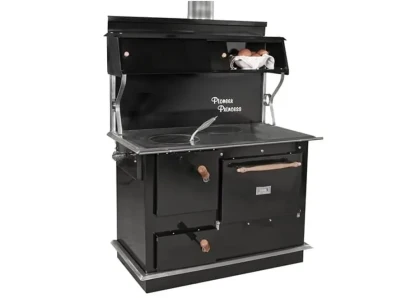
Rough Cut Lumber
Overview
Rough Cut Lumber, as its name suggests, is lumber in its most natural and unpolished state, cut straight from the log. Unlike its processed counterparts, it bypasses the usual stages of planing and sanding, retaining its organic texture and individualistic grain patterns. This unrefined quality is precisely what bestows upon it an inimitable rustic allure, making it a favorite among artisans and craftsmen seeking an authentic, earthy aesthetic.
The rugged beauty of Rough Cut Lumber is complemented by its substantial durability and strength. Since it's cut directly from the log, it retains much of the wood's inherent resilience and robustness. This makes it not only a visually appealing choice but also a practical one, capable of withstanding significant wear and tear.
In essence, Rough Cut Lumber is a celebration of wood in its rawest form. It is a testament to the beauty that can be found in nature's imperfections, and its rustic charm and sturdiness make it a uniquely versatile material. Whether you're seeking to craft a piece of custom furniture, construct a sturdy outdoor structure, or simply add a touch of rustic charm to your home, Rough Cut Lumber is a choice that brings both functionality and natural elegance.
According to a 2022 survey by the National Association of Home Builders, 52% of US homeowners use Rough Cut Lumber in their homes. This includes homeowners who use Rough Cut Lumber for projects such as flooring, siding, and furniture. and also in 2022, the United States produced19,293 thousand cubic meters of Rough Cut Lumber. This represents a 10% increase from 2021 production levels.
What are the different wood species of Rough Cut Lumber?
Rough Cut Lumber varies greatly, depending upon the species of the tree it originates from. Some popular varieties include Oak, Pine, Cedar, and Cherry. Each type has its unique texture, color, and hardness, thus making them suitable for various applications.
Hardwoods- Oak: Known for its great strength and hardness, Oak Rough Cut Lumber also offers distinct grain markings. It's often used in furniture, flooring, and construction.
- Cherry: Cherry Rough Cut Lumber is prized for its rich color and smooth grain. It's ideal for fine furniture and cabinetry.
- Maple: With its hardness and shock resistance, Maple Rough Cut Lumber is often used for heavy-duty items like workbenches and butcher blocks.
- Walnut: Featuring a rich, dark color, Walnut Rough Cut Lumber is a popular choice for high-quality furniture and decorative items.
- Pine: Pine Rough Cut Lumber is lightweight yet durable. It's commonly used for construction, paneling, and furniture.
- Cedar: Renowned for its resistance to decay, Cedar Rough Cut Lumber is often used for outdoor applications like decking and fencing.
- Douglas Fir: With a good strength-to-weight ratio, Douglas Fir Rough Cut Lumber is widely used in construction.
- Spruce: This light-colored wood is commonly used for indoor applications, like furniture and paneling.
Each variety of Rough Cut Lumber brings its unique attributes of texture, color, and hardness, making them suitable for a diverse range of applications.
Different types of wood products can be made from Rough Cut Lumber?
Rough Cut Lumber's versatility allows it to be used in a range of wood products. It can be transformed into custom furniture, decorative elements, outdoor structures, or used in construction for beams, rafters, and siding. Its rustic charm also makes it ideal for artistic woodworking projects.
- Furniture: Rough Cut Lumber is a popular choice for furniture making because it can be shaped and finished to create a unique and rustic look. It is often used for rustic farmhouse tables, benches, and chairs.
- Decorative elements: Rough Cut Lumber can also be used to create decorative elements for the home, such as shelves, mantels, and railings. It can be stained or painted to match any décor.
- Outdoor structures: Rough Cut Lumber is a durable and weather-resistant material that is ideal for outdoor structures, such as decks, gazebos, and pergolas. It can be left unfinished to weather naturally or stained or painted to protect it from the elements.
- Construction: Rough Cut Lumber is also used in construction for beams, rafters, and siding. It is a strong and versatile material that can be used in a variety of applications.
- Artistic woodworking: Rough Cut Lumber is also a popular choice for artistic woodworking projects. It can be used to create sculptures, bowls, and other objects. The natural beauty of the wood can be highlighted by carving or by leaving it unfinished.
Rough Cut Lumber is a versatile material that can be used to create a variety of wood products. Its rustic charm and durability make it a popular choice for both indoor and outdoor applications.
Ideal size and applications of Rough Cut Lumber?
While Rough Cut Lumber can be cut to various dimensions, popular sizes include 2x4, 2x6, and 4x4. It's widely used in construction, landscaping, and even in the creation of unique furniture pieces. Its natural, raw look makes it an attractive choice for adding a rustic touch to interior design.
Benefits of Rough Cut Lumber
One of the main benefits of Rough Cut Lumber is its aesthetic appeal. It brings a rustic and natural look to any project. It's also durable, strong, and more cost-effective compared to processed wood. Plus, its versatility allows it to be used in a multitude of projects.
- Aesthetic appeal: Rough Cut Lumber has a rustic and natural look that is often desired in home décor. The uneven edges and knots add character to the wood, and the natural variations in color and grain can be highlighted with staining or finishing.
- Durability: Rough Cut Lumber is a strong and durable material that can withstand the elements. It is often used for outdoor projects, such as decks, gazebos, and pergolas. Rough Cut Lumber is also resistant to rot and decay, making it a good choice for projects that will be exposed to moisture.
- Strength: Rough Cut Lumber is a strong material that can support a lot of weight. It is often used for beams, rafters, and other structural elements. Rough Cut Lumber is also resistant to warping and shrinking, making it a good choice for projects that require dimensional stability.
- Cost-effectiveness: Rough Cut Lumber is often more cost-effective than processed wood. This is because it is less processed, which means that there is less waste. Rough Cut Lumber is also often available locally, which can save on shipping costs.
- Versatility: Rough Cut Lumber is a versatile material that can be used in a variety of projects. It is often used for furniture, flooring, and decorative elements. Rough Cut Lumber can also be used for construction projects, such as beams, rafters, and siding.
- Environmentally friendly Rough Cut Lumber is a renewable resource that is grown in sustainably managed forests. It is a good choice for those who are looking for an environmentally friendly building material.
- Personal touch: Rough Cut Lumber allows you to add a personal touch to your projects. The unique character of the wood can be highlighted with staining or finishing, and you can choose the exact dimensions and shape of the wood to fit your needs.
- Learning opportunity: Working with Rough Cut Lumber can be a great learning experience. You can learn about the different types of wood, how to choose the right wood for your project, and how to work with wood.
Cons of Rough Cut Lumber.
The primary downside of Rough Cut Lumber is that it may require additional work, such as planing or sanding, depending on the desired finish. It can also be more challenging to find specific dimensions due to its rough cut nature. Additionally, it's more susceptible to weather and insect damage unless treated properly.
Treated options for Rough Cut Lumber.
Rough Cut Lumber can be treated with various preservatives to enhance its durability and resistance to rot, decay, and insects. Some popular options include pressure-treated lumber, which is infused with chemical preservatives, and naturally rot-resistant types like Cedar.
- Pressure-treated lumber: Pressure-treated lumber is infused with chemical preservatives under high pressure. This process makes the lumber resistant to rot, decay, and insects. Pressure-treated lumber is often used for outdoor projects, such as decks, fences, and playsets.
- Naturally rot-resistant types: Some types of wood are naturally rot-resistant, such as cedar, redwood, and cypress. These woods contain natural oils and resins that make them resistant to moisture and decay. Naturally rot-resistant woods are often used for outdoor projects, such as decks, fences, and siding.
- Heat-treated lumber: Heat-treated lumber is treated with heat to kill insects and fungi. This process does not use chemicals, so it is a more environmentally friendly option. Heat-treated lumber is often used for indoor projects, such as furniture and flooring.
- Alkaline-treated lumber: Alkaline-treated lumber is treated with a solution of water and alkaline salts. This process makes the lumber resistant to rot, decay, and insects. Alkaline-treated lumber is often used for outdoor projects, such as decks, fences, and playsets.
The best treated option for Rough Cut Lumber will depend on the specific project and the desired level of protection. If you are unsure which treatment is right for your project, consult with a lumber expert.
Here are some additional considerations when choosing a treated option for Rough Cut Lumber:
- Cost: The cost of treated lumber will vary depending on the type of treatment and the thickness of the lumber.
- Appearance: Some treated lumber may have a slightly different appearance than untreated lumber. This is especially true for heat-treated lumber, which may have a darker color.
- Durability: The durability of treated lumber will vary depending on the type of treatment and the conditions in which it will be used.
Additional tips for Rough Cut Lumber.
- When selecting Rough Cut Lumber, look for pieces with a consistent color and minimal knots or splits. This will help to ensure that the finished product is uniform in appearance.
- Always store it off the ground and in a dry, well-ventilated space to prevent moisture damage. Moisture can cause the wood to warp, crack, or rot.
- If you are planning to use Rough Cut Lumber for outdoor projects, you may want to consider treating it with a sealant or stain to protect it from the elements. This will help to extend the life of the wood and prevent it from prematurely weathering.
- If you are not sure how to work with Rough Cut Lumber, you may want to consult with a professional woodworker. They can help you choose the right wood for your project and provide guidance on how to work with it.
- Use sharp tools: Dull tools can tear the wood and make it difficult to work with.
- Take your time: Rough Cut Lumber can be difficult to work with, so it is important to take your time and be patient.
- Be aware of the grain: The grain of the wood will determine how it cuts and sands.
- Use the right finish: The finish you choose will affect the appearance and durability of the wood.
If you follow these tips, you can successfully work with Rough Cut Lumber and create beautiful and durable projects.
Where can I buy Rough Cut Lumber?
Discover high-quality rough cut lumber at Forestry. Trust us to provide top-notch options that meet your rough cut lumber needs. With our commitment to quality and customer satisfaction, find the perfect rough cut lumber for your project. Contact us now to explore our extensive selection.
- We offer wholesale and bulk buying options for rough cut lumber
- Wide variety of rough cut lumber
- Variety of grades and treatment options
- Knowledgeable team
- On-time completion
- Satisfaction guarantee
Conclusion
Rough Cut Lumber is an excellent option for those seeking a rustic, natural look for their woodworking or construction projects. While it does require some additional work and care compared to processed wood, its versatility, cost-effectiveness, and unique aesthetic make it a worthwhile choice.
FAQs
- Is Rough Cut Lumber good for outdoor use?
- Can I use Rough Cut Lumber for furniture?
- Does Rough Cut Lumber need to be treated?
- How is Rough Cut Lumber sized?
- What's the difference between Rough Cut Lumber and dimensional lumber?
Yes, but untreated lumber should be properly sealed or painted for protection against the elements.
Absolutely, Rough Cut Lumber is often used for making rustic furniture and provides a unique, natural aesthetic.
While not necessary, treating Rough Cut Lumber can enhance its durability and resistance to rot and insects, especially for outdoor use.
Rough Cut Lumber dimensions are usually provided in nominal sizes, which are slightly larger than the actual size, as they account for the wood's rough texture.
Unlike Rough Cut Lumber, dimensional lumber is planed and sanded for a smooth finish and cut to exact sizes, making it easier to work with for some projects.
No listings available
Related Products
Questions & Answers
What do you want to know about this product?
Reviews (5)
GreenGrove47
Environmentally Conscious
I love that Rough Cut Lumber is not just robust and beautiful, but also an eco-friendlier choice. It’s perfect for sustainable building.
ForestFancier29
Rustic Beauty
The unique grain patterns of Rough Cut Lumber lend a rustic, natural beauty to my projects. It's an aesthetic win in any application.
LumberLover101
A Woodworker's Dream
Rough Cut Lumber is perfect for bringing my creations to life. Its raw charm adds authenticity to every piece. An excellent choice for the craft.
BarkBudgeter53
Budget-friendly Quality
Rough Cut Lumber proves that quality doesn't have to break the bank. It’s an economical choice without compromising strength or charm.
TimberTitan76
Unmatched Durability
From garden structures to rustic furniture, the durability of Rough Cut Lumber is simply astounding. It withstands the test of time and elements.












